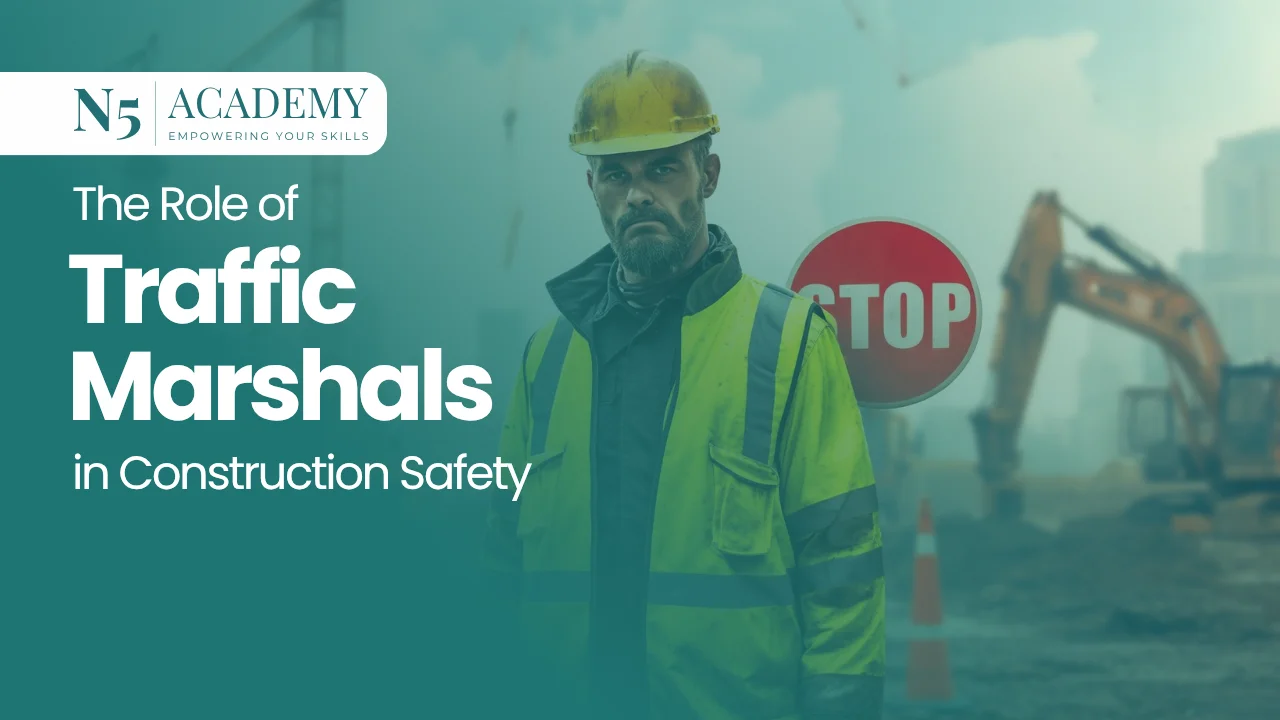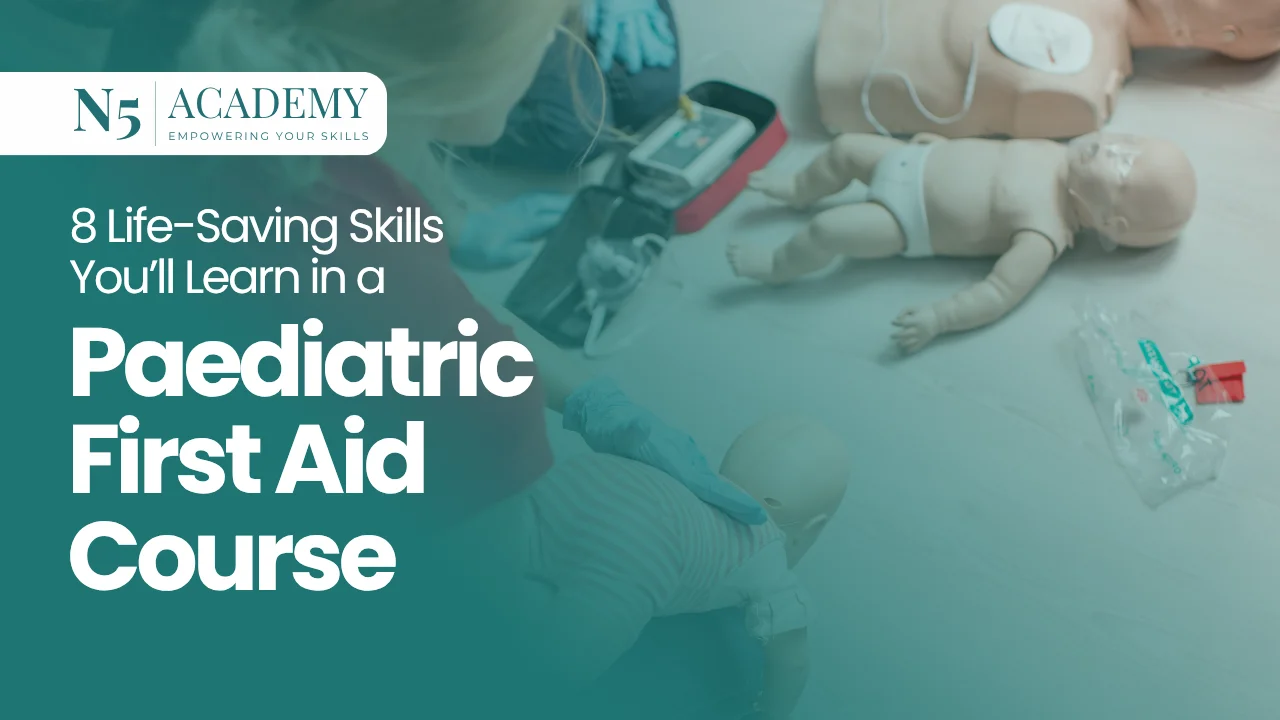

If you’re a parent, guardian, teacher, or childcare worker, knowing how to handle a child-related emergency can save a life. Accidents can happen quickly, and knowing pediatric first aid helps you act confidently and effectively in those moments.
In the UK, many child-related incidents happen each year that need immediate medical help before emergency responders arrive. Your knowledge could mean the difference between full recovery and long-term injury or worse.
At N5 Academy, we believe being prepared is crucial when it comes to children. Emergencies with kids are emotional and high-stakes. Having the right skills can help you turn fear into quick, effective action. We teach practical first-aid skills that boost your confidence in caring for children.
Our training covers more than just the basics. We focus on real-life scenarios, step-by-step responses, and hands-on practice to prepare you for emergencies like choking, seizures, and allergic reactions. Whether you’re a parent, teacher, or childminder, you should feel ready.
Here are eight life-saving skills that every adult who works or lives with children should learn. Acquiring these skills could be one of the most important things you ever do.
One of the most important skills for children to learn is Cardiopulmonary Resuscitation (CPR). It can save lives in emergencies like cardiac arrest, drowning, or choking.
In our pediatric first aid courses, you will learn:
You will practice on child and baby mannequins to build confidence and remember the techniques. This hands-on experience helps you prepare for real-life situations at school, home, or playgrounds.
You will also learn what happens in the body during cardiac arrest and how your actions can keep oxygen flowing until help arrives. This knowledge will empower you and help reduce panic in emergencies.
Choking is a common emergency in young children, especially those under 5. Food or small toys can block their airway, causing panic and serious harm.
In this course, you will learn important skills such as:
You will also learn to manage risks like vomiting, rib injuries, or anxiety after choking. The course uses real-life examples to help you spot signs that a child might be choking, like silent coughing or changes in skin colour.
Unconsciousness doesn’t always mean a heart has stopped. Children can faint from dehydration, a head injury, or conditions like epilepsy.
This skill will teach you how to:
Through roleplay and practice, you’ll learn to stay calm. You’ll know when to keep a child still and when it’s safe to move them. These actions can help prevent further injuries.
Shock can happen after an injury, a severe allergic reaction, or losing a lot of blood. It’s important to recognise the signs early to protect vital organs from damage.
You will learn to spot symptoms such as:
We will also explain how to use an auto-injector (EpiPen) for anaphylaxis, which is a serious condition that is becoming more common in children due to food allergies, insect stings, and medications.
By the end of this module, you’ll know:
Kids often get hurt, from spills to falls. Taking care of these injuries the right way helps avoid complications, infections, and scars.
Our Level 3 pediatric first aid training includes:
You will learn what to include in a first aid kit and how to make do when you don’t have supplies. You will also learn what NOT to do, like putting ice directly on a burn or removing stuck clothing.
Falls and head injuries happen often, but it’s important to know when they are serious. Not every head injury needs emergency help, but some can cause concussions, brain swelling, or passing out.
Our course covers:
You will practice recording symptoms and events before the injury. This helps paramedics and reassures parents that the right steps were followed.
Watching a child have a seizure can be scary. But with proper training, you’ll know how to keep the child safe and help them recover.
You’ll learn how to protect the child during a seizure by clearing the area and turning them on their side. You’ll also learn what not to do, like holding them down or putting anything in their mouth.
You’ll find out how to time the seizure and watch for important symptoms. You’ll learn about aftercare and when to call 999 for help.
The course will cover what causes seizures, such as epilepsy, high fever, head injuries, and other health issues. It includes practice scenarios to help you feel ready both emotionally and physically.
Sudden cardiac arrest can occur in children, though it is rare. Knowing how to use an AED (Automated External Defibrillator) can save lives, especially with more AEDs available in public spaces.
What you’ll learn:
The course includes a hands-on AED simulation so you can practice confidently. You’ll also learn why using an AED with CPR is important for the best outcome.
Some illnesses, like meningitis and asthma attacks, can get worse quickly if not spotted early. Our paediatric first aid course teaches you how to recognise warning signs and respond correctly.
We cover:
You’ll learn how to keep a child calm and communicate clearly with medical staff, ensuring they get the best care right from the start.
Classroom learning is useful, but true confidence comes from hands-on experience. That’s why N5 Academy courses use scenario-based training to put theory into practice.
Here’s how we do it:
These scenarios help build leadership, problem-solving, and communication skills. You’ll not only learn life-saving skills for children but also gain the confidence to use them under pressure when a child’s life is at risk.
This training is for anyone who spends time with children. We train:
Our paediatric first aid courses are approved by Ofsted and meet all legal requirements for early years providers. They also provide valuable skills for those wanting to work in childcare and education.
Need a quicker option? Try our one-day emergency paediatric first aid course. It covers essential skills for those who want to ensure child safety but have limited time.
Every second matters in an emergency. Learn paediatric first aid skills that can really help. N5 Academy offers full and emergency paediatric first aid courses to give you the knowledge, confidence, and certification you need.
Sign up today to start protecting the children in your care. Being prepared for their safety is not just responsible; it’s crucial.
We help you forge a successful career in health and safety. We’re a UK-based company providing top-notch safety training courses that adhere to industry standards.